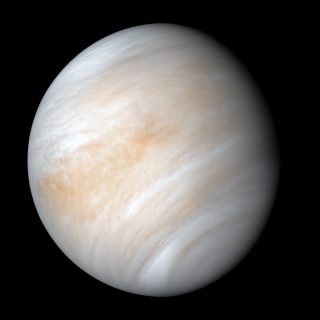
HONOLULU (Eagle News) – An international team of astronomers have recently discovered what may be the first hints of life on the planet Venus.
Using observations from the James Clerk Maxwell Telescope (JCMT) atop Mauna Kea on Hawaii’s Big Island, the team detected the gas phosphine in Venus’ upper clouds. On Earth, phosphine is excreted by microbes that thrive in oxygen-free environments.
For decades, astronomers have speculated that the high clouds on Venus could offer a home for microbes, microscopic organisms floating free of the planet’s scorching surface, with access to water and sunlight but needing to tolerate very high acidity.
The team reconfirmed the JCMT observations by using 45 telescopes of the Atacama Large Millimeter/submillimeter Array in Chile.
Both facilities observed Venus at a wavelength of about 1 millimeter, which is a very short-wavelength radio emission that can be detected only with telescopes at high altitudes, such as the summit area of Mauna Kea.
Astronomers ran calculations to see if phosphine could come from natural processes on Venus such as sunlight, volcanoes, or lightning. The Massachusetts Institute of Technology led the work on assessing those sources but found none could generate the observed quantity discovered by the team.

University of Hawaii (UH) at Hilo alumna E’Lisa Lee studied astronomy and helped carry out the observations for the study while working as a JCMT telescope operator.
“An observed biochemical process occurring on anything other than Earth has the greatest and most profound implications for our understanding of life on Earth, and life as a concept,” Lee explained. “Being able to participate in the scientific process… was an incredible and humbling experience. It is my sincerest hope that further observations will allow for greater exploration of Venusian clouds and everything beyond.”
According to the astronomers, more observations need to be conducted to monitor gas levels they observed. They hope that a spacecraft can be sent to Venus to take a sample of its atmosphere, especially if future studies continue to align with their discovery.
(With reports from EBC Hawaii Bureau, Eagle News Service)
